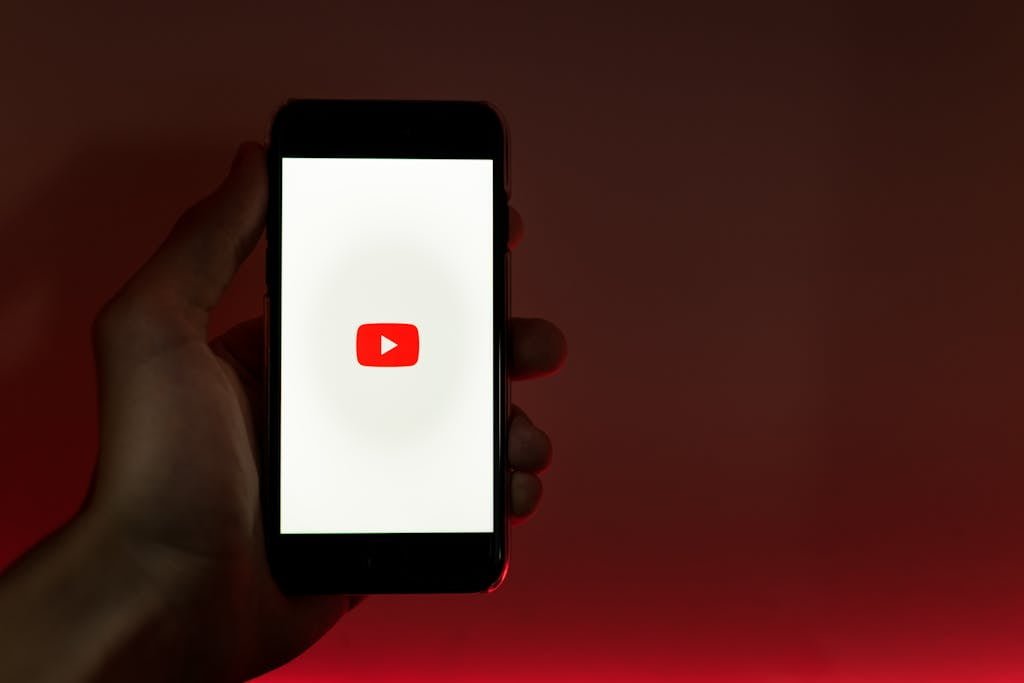In the world of B2B sales, lead nurturing plays a crucial role in building strong and lasting relationships with potential customers.
It goes beyond simply generating leads; it involves cultivating those leads and guiding them through the sales funnel until they are ready to make a purchase.
In this article, we will explore the concept of B2B sales lead nurturing and delve into the strategies and best practices that can help businesses unlock the power of relationship building.
Table of Contents
ToggleThe Importance of Lead Nurturing in B2B Sales
B2B sales teams face numerous challenges. Prospects are bombarded with information and have become more discerning in their decision-making process.
This makes it essential for businesses to nurture their leads and establish trust and credibility over time.
Lead nurturing allows businesses to stay top-of-mind with potential customers, build brand awareness, and position themselves as industry experts.
By providing valuable and relevant content, businesses can educate and engage their leads, addressing their pain points and demonstrating how their products or services can solve their problems.
Understanding the Sales Funnel
Before diving into lead nurturing strategies, it is important to have a clear understanding of the sales funnel.
The sales funnel represents the journey a lead takes from the initial awareness stage to becoming a paying customer.
It typically consists of the following stages:
- Awareness: The lead becomes aware of a business’s products or services.
- Interest: The lead shows interest in the business and explores further.
- Consideration: The lead evaluates different options and compares them.
- Decision: The lead makes a decision and becomes a customer.
Each stage requires a different approach to lead nurturing, as the needs and motivations of the lead evolve throughout the process.
Effective Lead Nurturing Strategies
Now that we have a solid foundation, let’s explore some effective lead nurturing strategies that can help businesses build strong relationships with their B2B leads:
1. Personalization is Key
Personalization is the cornerstone of successful lead nurturing. Generic, one-size-fits-all content is no longer enough to capture the attention of B2B leads. Instead, businesses should tailor their messaging and content to address the specific pain points and needs of each lead.
By leveraging data and analytics, businesses can gather valuable insights about their leads and create personalized experiences.
This can include customized email campaigns, personalized landing pages, and targeted content recommendations based on the lead’s preferences and behavior.
2. Provide Valuable and Relevant Content
Content is king, and providing valuable and relevant content is crucial for effective lead nurturing. B
usinesses should focus on creating educational and informative content that addresses the pain points and challenges faced by their target audience.
This can include blog posts, whitepapers, case studies, webinars, and industry reports.
By positioning themselves as thought leaders and providing valuable insights, businesses can establish trust and credibility with their leads.
3. Utilize Multiple Communication Channels
In today’s digital age, there are numerous communication channels available to businesses for lead nurturing.
It is important to leverage multiple channels to reach and engage leads effectively.
This can include email marketing, social media platforms, webinars, live chat, and even offline events such as conferences and trade shows.
By diversifying communication channels, businesses can maximize their reach and ensure that their message reaches their target audience.
4. Implement Marketing Automation
Marketing automation tools can significantly streamline and enhance the lead nurturing process.
These tools allow businesses to automate repetitive tasks, such as sending personalized emails, tracking lead behavior, and scoring leads based on their engagement level.
By implementing marketing automation, businesses can ensure consistent and timely communication with their leads, nurturing them through the sales funnel efficiently.
5. Measure and Optimize
To truly unlock the power of lead nurturing, businesses must continuously measure and optimize their strategies.
By analyzing data and metrics, businesses can identify what is working and what needs improvement.
This can include tracking email open rates, click-through rates, conversion rates, and lead engagement.
By making data-driven decisions, businesses can refine their lead nurturing strategies and achieve better results over time.
Example Lead Nurturing Campaign
Let’s use a digital marketing agency as an example.
Here’s what a campaign, including lead nurturing, could look like. Notice that we include a lot of social selling and account based marketing strategies, but with follow-ups to ensure the lead gets nurtured into a long-term paying client.
Goal:
To nurture leads through targeted communication and personalized engagement to ultimately convert them into loyal clients.
Stage 1: Awareness
Objective: Introduce the agency’s services and establish brand awareness.
Tactics:
- Content Marketing:
- Publish blog posts, articles, and social media content that address common pain points and challenges faced by the target audience.
- Utilize SEO techniques to increase visibility and attract organic traffic.
- Social Media Engagement:
- Share informative and engaging content on platforms where the target audience is active.
- Engage with comments, shares, and direct messages to foster relationships.
- Lead Magnets:
- Offer valuable resources such as e-books, whitepapers, or webinars in exchange for contact information.
- Cold Email, LinkedIn, and Instagram DM Outreach
Stage 2: Interest
Objective: Capture the interest of leads and provide them with more detailed information about the agency’s services.
Tactics:
- Email Marketing:
- Send personalized emails to leads segmented based on their interests and behavior.
- Provide case studies, success stories, and testimonials to showcase the agency’s expertise and results.
- Webinars and Workshops:
- Host live webinars or workshops covering topics relevant to the target audience’s needs and interests.
- Encourage interaction and participation to establish credibility and trust.
- Retargeting Ads:
- Display targeted ads to leads who have visited the agency’s website but haven’t taken further action.
- Highlight specific services or benefits based on their previous interactions.
Stage 3: Decision
Objective: Encourage leads to take action and consider the agency’s services as a solution to their needs.
Tactics:
- Consultation Offers:
- Offer free consultations or audits to qualified leads to assess their specific challenges and provide tailored solutions.
- Highlight the value proposition and benefits of working with the agency.
- Personalized Follow-ups:
- Reach out to leads individually via email or phone to address any questions or concerns they may have.
- Provide additional resources or information to help them make an informed decision.
- Limited-time Offers:
- Create urgency by offering limited-time discounts or bonuses for leads who sign up or make a purchase within a certain timeframe.
- Use countdown timers or scarcity tactics to emphasize the urgency of the offer.
Stage 4: Conversion
Objective: Convert leads into paying clients and onboard them effectively.
Tactics:
- Seamless Onboarding Process:
- Provide a smooth and hassle-free onboarding experience for new clients, including clear instructions and support.
- Set expectations and communicate the next steps to ensure a positive first impression.
- Welcome Campaign:
- Send a series of welcome emails to new clients, introducing key team members, outlining services, and providing resources to help them get started.
- Gather feedback and address any concerns to reinforce client satisfaction and loyalty.
- Ongoing Engagement:
- Stay in touch with clients through regular updates, newsletters, and personalized communications.
- Offer additional services or upsells based on their evolving needs and goals.
Stage 5: Retention
Objective: Foster long-term relationships with clients and encourage repeat business.
Tactics:
- Client Education:
- Provide ongoing education and training resources to help clients maximize the value of the agency’s services.
- Offer workshops, webinars, or tutorials on relevant topics.
- Exclusive Offers:
- Reward loyal clients with exclusive discounts, promotions, or VIP perks.
- Create a referral program to incentivize clients to refer new business.
- Feedback and Improvement:
- Solicit feedback from clients regularly to identify areas for improvement and address any issues proactively.
- Demonstrate responsiveness and commitment to client satisfaction.
Measurement and Optimization:
- Track key metrics such as website traffic, email open rates, click-through rates, conversion rates, and client retention rates.
- Use A/B testing to optimize email subject lines, content, and calls-to-action for maximum effectiveness.
- Continuously refine the lead nurturing plan based on data-driven insights and feedback from both leads and clients.
By implementing this lead nurturing plan, the digital marketing agency can effectively engage with leads at every stage of the buyer’s journey, build trust and credibility, and ultimately drive conversions and long-term client relationships.
FAQ
How long does lead nurturing typically take?
Lead nurturing timelines can vary depending on the complexity of the product or service being offered and the specific needs of the target audience. On average, lead nurturing can take anywhere from a few weeks to several months.
How often should businesses communicate with their leads during the nurturing process?
The frequency of communication with leads during the nurturing process should strike a balance between staying top-of-mind and avoiding overwhelming the lead. Generally, a weekly or bi-weekly communication cadence is recommended, but this can be adjusted based on the lead’s preferences and engagement level.
Can lead nurturing be automated entirely?
While marketing automation toolscan automate certain aspects of lead nurturing, it is important to maintain a human touch in the process. Personalized communication and tailored content are key to building strong relationships with leads. Automation should be used to streamline and enhance the nurturing process, but human interaction and customization should not be neglected.
How can businesses measure the effectiveness of their lead nurturing efforts?
Businesses can measure the effectiveness of their lead nurturing efforts by tracking key metrics and analyzing data. This can include monitoring email open rates, click-through rates, conversion rates, and lead engagement. By analyzing these metrics, businesses can identify areas of improvement and make data-driven decisions to optimize their lead nurturing strategies.
What are some common mistakes to avoid in lead nurturing?
Some common mistakes to avoid in lead nurturing include:
- Sending generic and irrelevant content to leads
- Overwhelming leads with too many communications
- Neglecting to personalize messages and content
- Failing to follow up with leads in a timely manner
- Not measuring and analyzing the effectiveness of lead nurturing efforts
By avoiding these mistakes and implementing best practices, businesses can maximize the effectiveness of their lead nurturing campaigns.
Conclusion
B2B sales lead nurturing is a powerful strategy that can help businesses build strong relationships with potential customers.
By personalizing communication, providing valuable content, utilizing multiple channels, implementing marketing automation, and continuously measuring and optimizing strategies, businesses can unlock the full potential of lead nurturing.
Remember, lead nurturing is not a one-time event but an ongoing process that requires consistent effort and dedication. By investing in relationship building and providing value to leads, businesses can increase their chances of converting leads into loyal customers.
So, embrace the power of lead nurturing and watch your B2B sales soar to new heights!







